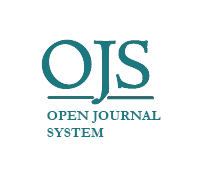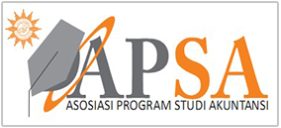Ratio Analysis to Financial Distress with Profitability as a Moderation Variable
DOI:
https://doi.org/10.22219/jrak.v13i2.24506Keywords:
Cash Flow Operating, Financial Distress, Leverage, Liquidity, Sales GrowthAbstract
Purpose: This research aims to determine the leverage effect measured by debt to asset ratio and debt to equity ratio, liquidity measured by the current ratio, sales growth, operating cash flow on financial distress with profitability measured by return on assets as a moderating variable.
Methodology/approach: Research objects were 54 real estate companies registered with S&P Capital IQ 2017 – 2021. Sample selection used purposive sampling method. Data processing method uses Panel Data Regression with Random Effect Model.
Findings: This study proves operating cash flow and leverage has a positive effect on financial distress, leverage and liquidity have a negative effect on financial distress. Sales growth does not affect financial distress. Other results, profitability as a moderating variable strengthens the effect of sales growth and operating cash flow on financial distress and profitability weakens effect of debt to asset ratio and liquidity on financial distress. Meanwhile, profitability does not moderate effect of leverage on financial distress.
Practical implications: This research contributes to development of literature on factors influence the occurrence of financial difficulties. Practically, it has implications for companies to analyze, maintain financial ratios in a healthy condition to avoid financial difficulties.
Originality/value: This study uses profitability that measured by return on assets as a moderating variable
Downloads
References
Agustini, N. W., & Wirawati, N. G. P. (2019). Pengaruh rasio keuangan pada financial distress perusahaan ritel yang terdaftar di bursa efek indonesia (BEI). E-Jurnal Akuntansi, 26(1), 251-280. https://doi.org/10.24843/eja.2019.v26.i01.p10
Annisa, H. R., Rochmah, H. N., & Ekasari, W. F. (2022). Pengaruh tata kelola dan kinerja perusahaan terhadap financial distress pada perusahaan consumer goods industry. Jurnal Akuntansi Aktual, 9(2), 96-110. https://doi.org/10.17977/um004v9i22022p096
Brigham, E. F., & Houston, J. F. (2019). Fundamentals of financial management: Concise (15 ed.). Cengage Learning.
Dianova, A., & Nahumury, J. (2019). Investigating the effect of liquidity, leverage, sales growth and good corporate governance on financial distress. Journal of Accounting and Strategic Finance, 2(2), 143-156. https://doi.org/10.33005/jasf.v2i2.49
Giarto, R. V. D., & Fachrurrozie, F. (2020). The effect of leverage, sales growth, cash flow on financial distress with corporate governance as a moderating variable. Accounting Analysis Journal, 9(1), 15-21. https://doi.org/10.15294/aaj.v9i1.31022
Gunawan, A. W., Assagaf, A., Sayidah, N., & Mulyaningtyas, A. (2019). Financial Distress di BUMN dan Faktor-faktor Yang Mempengaruhi. Ekuitas: Jurnal Ekonomi dan Keuangan, 3(2), 226-243. https://doi.org/10.24034/j25485024.y2019.v3.i2.4135
Hakim, M. Z., & Naelufar, Y. (2020). Analysis of profit growth, profitability, capital structure, liquidity and company size of profit quality. Jurnal Akademi Akuntansi, 3(1), 12-35. https://doi.org/10.22219/jaa.v3i1.10348
Hoechle, D. (2007). Robust standard errors for panel regressions with cross-sectional dependence. The stata journal, 7(3), 281-312.
Idawati, W., & Wardhana, A. K. (2021). Analysis of Financial Distress with Profitability as Moderation Variable. Jurnal Akuntansi, 25(2), 222-238. https://doi.org/10.24912/ja.v25i2.807
Indira, I., & Dilasari, A. P. (2023). Peran Moderasi Profitabilitas Terhadap Faktor Prediksi Financial Distress. Jurnal Manajemen Riset Inovasi, 1(1), 118-134.
Isayas, Y. N. (2021). Financial distress and its determinants: Evidence from insurance companies in Ethiopia. Cogent Business & Management, 8(1), 1951110. https://doi.org/10.1080/23311975.2021.1951110
Juanda, A., & Lamury, T. F. (2021). Kualitas audit, profitabilitas, leverage dan struktur kepemilikan terhadap opini audit going concern. Jurnal Akademi Akuntansi, 4(2), 270-287. https://doi.org/10.22219/jaa.v4i2.17993
Kristiana, D. (2021). Faktor-Faktor Yang Mempengaruhi Financial Distress Dengan Dimoderasi Profitabilitas. Jurnal Akuntansi, 10(1), 49-62.
Kurniasih, A., Sumarto, A. H., Setyawasih, R., & Pujihastuti, I. (2020). Determinant of Financial Distress : The Case of Pulp & Paper Companies Registered In Indonesia Stock Exchange. Jurnal Manajemen & Agribisnis, 17(3), 254-254. https://doi.org/10.17358/jma.17.3.254
Kusuma, H. A., Dewi, M. W., & Ningsih, S. (2022). Pengaruh Likuiditas, Leverage, Profitabilitas, dan Sales Growth Terhadap Financial Distress pada Perusahaan Manufaktur yang Terdaftar di BEI Periode 2018-2020. Jurnal Akuntansi dan Pajak, 23(1).
Lubis, M. S. W. (2021). Pengembang Terbesar Singapura, CapitaLand, Catat Rekor Kerugian. https://m.bisnis.com/amp/read/20210224/47/1360344/pengembang-terbesar-singapura-capitaland-catat-rekor-kerugian
Mulyatiningsih, N., & Atiningsih, S. (2021). Peran Profitabilitas Dalam Memoderasi Pengaruh Intellectual Capital, Leverage, Dan Sales Growth Terhadap Financial Distress. Juara: Jurnal Riset Akuntansi, 11(1), 55-74.
Murni, M. (2018). Analisis faktor-faktor yang mempengaruhi tingkat financial distress pada perusahaan manufaktur yang terdaftar di bei tahun 2010-2014. Jurnal Akuntansi Dan Bisnis: Jurnal Program Studi Akuntansi, 4(1).
Oktaviani, N. D. D., & Lisiantara, G. A. (2022). Pengaruh Profitabilitas, Likuiditas, Aktivitas, Leverage, dan Sales Growth Terhadap Financial Distress. Owner: Riset dan Jurnal Akuntansi, 6(3), 2613-2623. https://doi.org/10.33395/owner.v6i3.944
Phan, T. D., Hoang, T. T., & Tran, N. M. (2022). Cash flow and financial distress of private listed enterprises on the Vietnam stock market: A quantile regression approach. Cogent Business & Management, 9(1), 2121237.
Pradana, R. S. (2020). Analisis Financial Distress Pada Perusahaan Pertambangan Batu Bara Yang Terdaftar Di Bursa Efek Indonesia Periode 2017-2018. Jurnal Akuntansi Dan Bisnis: Jurnal Program Studi Akuntansi, 6(1), 36-45. https://doi.org/10.31289/jab.v6i1.2825
Pranita, K. R., & Kristanti, F. T. (2020). Analisis Financial Distress Menggunakan Analisis Survival. Nominal Barometer Riset Akuntansi dan Manajemen, 9(2), 240-257. https://doi.org/10.24843/eja.2019.v26.i01.p10
Rosyid, M. F., Saraswati, E., & Ghofar, A. (2022). Firm Value: CSR Disclosure, Risk Management And Good Corporate Governance Dimensions. Jurnal Reviu Akuntansi dan Keuangan, 12(1), 186-209.
Sanbowo, V. B., & Naibaho, E. A. B. (2021). Dampak Leverage, Likuiditas, Dan Profitabilitas Terhadap Financial Distress. Jurnal Administrasi Kantor, 9, 263-274.
Shehnaz, M. (2022). UK Property Firm Insolvencies Soar As Rates Of Interest Rise. https://www.businesslend.com/news/uk-property-company-insolvencies-soar-as-interest-rates-rise/
Sorongan, T. P. (2021). Krisis di China Makin Parah, Ternyata Ini Biang Keroknya. cnbcindonesia.com/news/20211014085239-4-283778/krisis-di-china-makin-parah-ternyata-ini-biang-keroknya
Spence, M. (1973). Job market signaling. The Quarterly Journal of Economics, 87(3), 355–374. https://doi.org/10.1016/B978-0-12-214850-7.50025-5
Sudaryanti, D., & Dinar, A. (2019). Analisis prediksi kondisi financial distress menggunakan rasio likuiditas, profitabilitas, financial leverage dan arus kas. Jurnal Ilmiah Bisnis Dan Ekonomi Asia, 13(2), 101-110. https://doi.org/10.32812/jibeka.v13i2.120
Syuhada, P., Muda, I., & Rujiman, F. (2020). Pengaruh Kinerja Keuangan dan Ukuran Perusahaan Terhadap Financial Distress Pada Perusahaan Property dan Real Estate di Bursa Efek Indonesia. Jurnal Riset Akuntansi Dan Keuangan, 8(2), 319-336. https://doi.org/10.17509/jrak.v8i2.22684
Trisnawati, N. L. D. E. (2021). Enterprise risk management disclosure: siklus hidup perusahaan dan kepemilikan manajerial terhadap nilai perusahaan. Nilacakra.
Triyani, A., & Setyahuni, S. W. (2023). How Financial Distress Affect The Coping Strategy? Case Of Indonesian MSME’s During The Covid-19 Outbreak. Jurnal Reviu Akuntansi dan Keuangan, 13(1), 1-17. https://doi.org/10.22219/jrak.v13i1.22209
Utami, I. W., & Kartika, T. P. D. (2019). Determinants of financial distress in property and real estate companies. The Indonesian Accounting Review, 9(1), 109. https://doi.org/10.14414/tiar.v9i1.1705
Wang, Y., Zhang, D., Wang, X., & Fu, Q. (2020). How does COVID-19 affect China’s insurance market? Emerging Markets Finance and Trade, 56(10), 2350-2362. https://doi.org/10.1080/1540496X.2020.1791074
Wareza, M. (2021). Kisah Ancaman Bangkrut Evergrande China & Efeknya Nan Dahsyat. https://www.cnbcindonesia.com/market/20210925111647-17-279074/kisah-ancaman-bangkrut-evergrande-china-efeknya-nan-dahsyat
Wilujeng, R., & Yulianto, A. (2020). Determinan Financial Distress dengan Profitabilitas Sebagai Variabel Moderating. Jurnal Penelitian Ekonomi dan Bisnis, 5(1), 90-102. https://doi.org/10.33633/jpeb.v5i1.2746
Downloads
Published
Issue
Section
License
Copyright (c) 2023 Eduard Ary Binsar Naibaho, Adeline Natasya

This work is licensed under a Creative Commons Attribution-NonCommercial-ShareAlike 4.0 International License.

Jurnal Reviu Akuntansi dan Keuangan is licensed under a Creative Commons Attribution-NonCommercial-ShareAlike 4.0 International License.
Authors who publish with this journal agree to the following terms:
- Authors retain copyright and grant the journal right of first publication with the work simultaneously licensed under a Creative Commons Attribution-NonCommercial-ShareAlike 4.0 International License that allows others to share the work with an acknowledgement of the work's authorship and initial publication in this journal.
- Authors are able to enter into separate, additional contractual arrangements for the non-exclusive distribution of the journal's published version of the work (e.g., post it to an institutional repository or publish it in a book), with an acknowledgement of its initial publication in this journal.
- Authors are permitted and encouraged to post their work online (e.g., in institutional repositories or on their website) prior to and during the submission process, as it can lead to productive exchanges, as well as earlier and greater citation of published work (See The Effect of Open Access).










